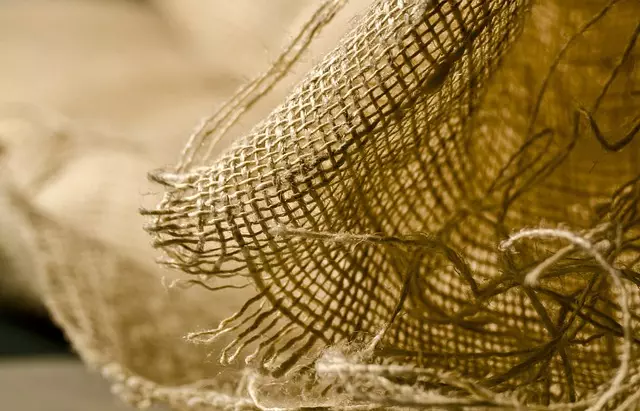Yellow kratom, derived from the Mitragyna speciosa tree, is a botanical supplement traditionally used for its therapeutic benefits, particularly for muscle soreness relief. It's known for its balanced effects that offer analgesic properties without causing drowsiness, thanks to a unique alkaloid composition achieved through a fermentation process. This combination of compounds engages with the body's opioid receptors to modulate pain perception and potentially exert anti-inflammatory effects. Yellow kratom strains like Maeng Da Yellow, Bali Yellow, and Indo Yellow are distinct from white and red kratom due to their production processes and are appreciated for their ability to enhance mood, provide relaxation, and offer well-being support during recovery from intense physical activity. It's important to start with a modest dose and consult healthcare professionals before use, especially for individuals with pre-existing conditions or those taking other medications. For comprehensive muscle soreness management, yellow kratom is best used in conjunction with hydration, electrolyte balance, stretching, massage therapy, rest, and a nutrient-rich diet to support overall recovery and healing. What is yellow kratom used for? It's primarily utilized for its potential to alleviate muscle soreness from exercise and chronic pain conditions, as part of an integrated wellness approach.
Muscle soreness can be a significant hindrance to an active lifestyle, often leaving individuals grappling with discomfort that impairs their ability to maintain regular exercise routines. This article explores the multifaceted nature of muscle soreness and introduces yellow kratom as a natural supplement potentially offering relief. Delving into the science behind kratom’s alkaloids, we uncover how they can effectively alleviate pain without the side effects commonly associated with traditional analgesics. Furthermore, we guide readers on integrating yellow kratom into their post-workout regimen, and examine the various strains of this plant to pinpoint which ones are most beneficial for muscle recovery. Finally, we complement these insights with additional strategies to maximize the pain-relieving benefits of yellow kratom, providing a holistic approach to managing muscle soreness. What is yellow kratom used for? Its multifaceted applications for pain relief and muscle recovery make it a compelling subject for those looking to maintain an active and healthy lifestyle.
- Understanding Muscle Soreness: Causes and Symptoms
- Yellow Kratom as a Natural Remedy for Muscle Soreness
- The Science Behind Kratom Alkaloids and Their Effects on Pain Relief
- How to Safely Incorporate Yellow Kratom into Your Post-Workout Routine
- Exploring the Varieties of Yellow Kratom Strains and Their Specific Benefits for Muscle Recovery
- Complementary Strategies for Maximizing Muscle Soreness Relief with Yellow Kratom Use
Understanding Muscle Soreness: Causes and Symptoms

Muscle soreness, often referred to as delayed onset muscle soreness (DOMS), can occur after intense physical activity or exercise, particularly when engaging in unfamiliar movements or after a period of inactivity. The causes of this discomfort are multifaceted and can include microscopic tears in the muscle fibers, inflammation, and biochemical imbalances resulting from the stress placed on the muscles. Symptoms typically manifest as pain, tenderness, and stiffness in the affected muscles, which can range from mild to severe. Understanding the triggers of muscle soreness is crucial for effective management and recovery.
Enter yellow kratom, a supplement derived from the leaves of the Mitragyna speciosa tree, which has been traditionally used for its potential health benefits. What is yellow kratom used for? Among its various applications, yellow kratom is often explored for its analgesic properties that may assist in alleviating muscle pain and discomfort associated with soreness. The unique hue of yellow kratom is achieved through a fermentation process, which may influence its alkaloid profile and contribute to its potential soothing effects on the musculoskeletal system. Users report that yellow kratom can offer a balanced effect, providing relief without inducing drowsiness, making it a versatile option for individuals seeking muscle soreness relief post-exercise. As with any supplement, it is important to consult with a healthcare provider before incorporating yellow kratom into your regimen to ensure safety and appropriateness for your specific health needs.
Yellow Kratom as a Natural Remedy for Muscle Soreness

Yellow Kratom, derived from the leaves of Mitragyna speciosa, a tree native to Southeast Asia, has been traditionally used for its therapeutic properties. One of the primary applications for which yellow kratom is revered is for muscle soreness relief. This unique strain is crafted through a drying process that involves exposing harvested kratom leaves to sunlight after they have been dried indoors, which gives yellow kratom its distinct hue and characteristics. The alkaloids present in yellow kratom, such as 7-hydroxymitragynine and mitraphylline, are believed to interact with the body’s opioid receptors, providing analgesic effects that can help alleviate muscle pain and discomfort. Users often report that yellow kratom aids in soothing sore muscles, potentially due to its anti-inflammatory properties and ability to modulate pain signals. As a natural remedy, it offers an alternative to synthetic painkillers, which can sometimes lead to unwanted side effects or addiction. When incorporating yellow kratom into muscle soreness relief strategies, it is important to adhere to recommended dosages and consider individual sensitivities, as the effects of kratom can vary among users. Additionally, while yellow kratom may be effective for some, it should complement a broader approach to recovery that includes proper rest, hydration, nutrition, and possibly other therapeutic modalities like physical therapy or massage.
The Science Behind Kratom Alkaloids and Their Effects on Pain Relief

Kratom, a tropical evergreen tree native to Southeast Asia, has been traditionally used in its indigenous regions for its stimulant and sedative properties. The pain-relieving effects of kratom are primarily attributed to its alkaloid content, particularly the mitragynine and 7-hydroxymitragynine alkaloids, which engage with the opioid receptors in the brain, producing analgesic effects. These compounds bind to mu-opioid receptors similarly to morphine but without its high potency and associated risks. The science behind these interactions is complex; however, it has been established that kratom’s alkaloids modulate pain perception by inhibiting neuronal excitability and enhancing the release of endogenous opioids in the central nervous system, which can provide relief from various types of pain.
When discussing specific strains of kratom, yellow vein kratom is a unique subset that is derived from both red and green vein kratom leaves, often through a fermentation process or a drying process that exposes the leaves to sunlight. Yellow kratom is renowned for its balanced effects, offering a blend of stimulation and sedation, with pain-relieving properties that are milder than the red vein but more pronounced than the green vein strain. Its use, as reflected in the question “What is yellow kratom used for?” is multifaceted, encompassing the management of chronic pain, mood enhancement, and energy regulation. Users often report its effectiveness for muscle soreness relief, which can be particularly beneficial for those experiencing discomfort from overexertion or conditions that necessitate ongoing pain management.
How to Safely Incorporate Yellow Kratom into Your Post-Workout Routine

When incorporating yellow kratom into your post-workout routine, it’s crucial to understand its properties and how it can complement your recovery process. Yellow kratom, derived from the leaves of the Mitragyna speciosa tree, is often used for its potential analgesic effects, which can be beneficial for alleviating muscle soreness. After an intense workout, muscle fibers can experience micro-tears and inflammation, leading to discomfort. Yellow kratom may help manage this pain by interacting with the opioid receptors in the brain, providing a natural analgesic effect without the side effects often associated with prescription painkillers.
To safely incorporate yellow kratom into your routine, it’s important to start with a lower dose to gauge your body’s response. Typically, users might begin with a gram or two of yellow kratom powder and assess how their body reacts before adjusting the dosage as needed. It’s also recommended to consult with a healthcare provider before adding any new supplement to your regimen, especially if you have pre-existing health conditions or are taking other medications. Yellow kratom should be taken post-workout, as its effects can last several hours, allowing for optimal recovery time. Additionally, it’s advisable to maintain proper hydration and nutrition alongside yellow kratom use to support overall well-being and ensure the supplement works synergistically with your body’s natural healing processes. Remember to monitor your intake and adjust based on individual tolerance and the intensity of your workout regimen.
Exploring the Varieties of Yellow Kratom Strains and Their Specific Benefits for Muscle Recovery

When delving into the realm of natural supplements for muscle recovery, yellow kratom strains have garnered attention due to their unique properties. Unlike its more widely recognized counterparts, white and red kratom, yellow kratom is often produced through a combination of harvesting and drying processes that differentiate it from the raw leaves of the Mitragyna speciosa tree. This distinction leads to a variety of alkaloid profiles that may contribute to its potential benefits for muscle recovery. Among the most prominent yellow strains are Maeng Da, Bali, and Indo.
Maeng Da Yellow Kratom is celebrated for its balanced alkaloid content, which users report promotes both energy and relaxation without overwhelming stimulation. Its application for muscle soreness relief stems from the belief that it may enhance mood and provide a sense of well-being, which can be beneficial when recovering from intense physical activities. The Bali Yellow kratom, on the other hand, is noted for its calming effects, potentially making it suitable for those seeking to alleviate muscle tension without the invigorating side effects sometimes associated with other strains. Indo Kratom’s yellow variation is often recognized for its mood-elevating and analgesic properties, which might aid in post-exercise recovery by mitigating discomfort and facilitating a more comfortable recuperation period. Users interested in what yellow kratom is used for often explore these strains to find relief from muscle soreness, with the caveat that individual experiences may vary, and it’s always recommended to consult with healthcare professionals before integrating any supplement into one’s wellness regimen.
Complementary Strategies for Maximizing Muscle Soreness Relief with Yellow Kratom Use

Yellow kratom, derived from the leaves of the Mitragyna speciosa tree, has long been recognized for its potential wellness benefits, including muscle soreness relief. When incorporating yellow kratom into a regimen aimed at alleviating post-exercise muscle discomfort, it’s advisable to combine this approach with complementary strategies. Proper hydration and electrolyte balance are critical; dehydration can exacerbate muscle soreness. Engaging in gentle stretching or yoga after your workout can enhance flexibility and promote recovery. Massage therapy, particularly with techniques that focus on the affected muscles, can also aid in reducing inflammation and tension, synergizing with yellow kratom’s potential analgesic properties. Additionally, ensuring adequate rest and sleep is essential for muscle repair; the body undergoes significant regenerative processes during sleep, which are crucial for soothing sore muscles. Lastly, incorporating a balanced diet rich in antioxidants and anti-inflammatory nutrients can further support your body’s natural healing mechanisms, making yellow kratom a complementary tool within a holistic approach to muscle soreness relief.
In conclusion, muscle soreness can be a significant impediment to an active and healthy lifestyle. However, understanding its origins and recognizing the role of natural supplements like yellow kratom in alleviating discomfort is pivotal. The article has explored the multifaceted aspects of muscle soreness, from its causes and symptoms to the scientifically grounded benefits of yellow kratom as a remedy. Yellow kratom, known for its analgesic properties, can be an effective component in a post-workout regimen aimed at muscle recovery. Its specific strains offer varied advantages, contributing to a holistic approach to muscle soreness relief. By integrating yellow kratom responsibly and complementing it with other recovery strategies, individuals can optimize their muscle health and maintain an active routine. Remember, for those inquiring “what is yellow kratom used for,” the answer lies in its natural potential to aid in pain management and support muscle recovery.






